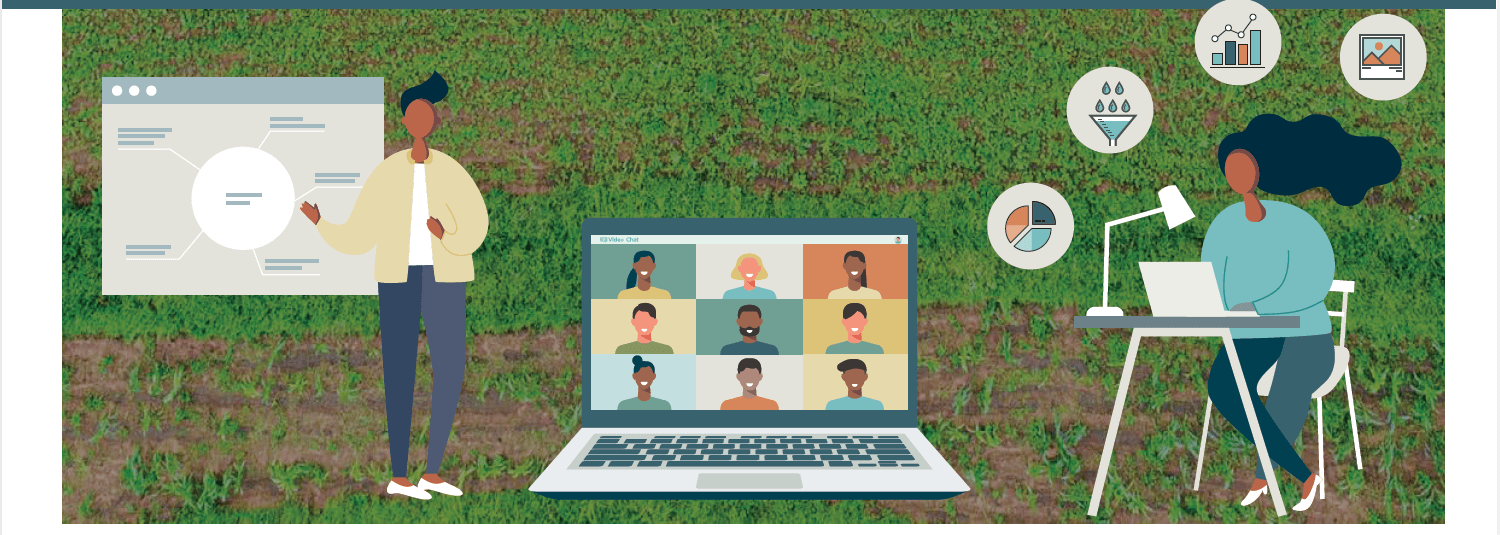“I see your point!” How data visualization and facilitating access to data can help stakeholders make more impactful decisions
- From
-
Published on
15.07.21
- Impact Area

How to tailor data visualization and evidence sharing for improved stakeholder uptake and application? New research brief and blog from CIFOR-ICRAF team.
Imagine that you’re in charge of a geographical area (let’s say a state) for a period of time. During this time, a disease outbreak is predicted to happen. Your chief medical advisor tells you that the disease will kill 600 people if no action is taken. There are, however, two plans. Neither of which guarantee that you’ll get everyone out safely. In plan A, 200 people will be saved whereas in plan B there’s ⅓ of a chance that 600 people will be saved otherwise no one will be saved.
What plan will you choose?
Now let’s take the same situation except your chief medical advisor gives you the same plan in a different manner. This time you are told that Plan A means that 400 people will die and in Plan B there’s a ⅓ chance that no one will die, otherwise 600 people will die. Did this change your mind? If you’re anything like the respondents that Amos Tversky and Daniel Kahneman encountered in 1981 then you most likely chose Plan A in the first scenario and Plan B in the second scenario.
This experiment led Tversky and Kahneman to conclude that human beings respond differently to the same set of information depending on how it is presented to us – what is now known as the framing effect.
Evidence based and informed decision making is key for developing relevant and effective strategies and policies, and evidence is often drawn from big data. Many of the most useful data sets contain large amounts of valuable statistics which can be difficult to comprehend in a meaningful way. Data visualization turns complex numbers and other pieces of information into graphs, tables and charts, making the evidence easier to understand and use and enabling decision makers to grasp various concepts and get data-driven insights in order to make evidence-based decisions.
However, simply presenting people with designed data doesn’t mean good decisions will happen. As Tversky and Kahneman proved, how the data is presented plays a big role in how it will be understood. Data visualization can become a stumbling block to decision makers if not designed to communicate clearly and allow the user to further interrogate the data to reach a full understanding of what’s presented. Further, even when well designed, facilitation to guide accurate interpretation is vital. Who is helping the policymakers bring that evidence together, identify new patterns, and then use that synthesized information to make solid policy and strategies? Very little research has been done to understand the importance of facilitating interaction with data for uptake and use.
The opportunity to conduct research around both these areas presented itself in Kenya where decision makers and technical staff from multiple government sectors and non-governmental organizations at national and subnational levels were working on developing the Kenya National Agroforestry Strategy, with technical support from CIFOR-ICRAF. Together with the Busara Center for Behavioral Economics we set up at ICRAF’s SHARED Decision hub to seize the momentum.
Related news
-

From Dirt to Decision-Making: Governance and Soil Health Must Go Hand in Hand
Multifunctional Landscapes Science Program26.11.25-
Biodiversity
-
Environmental health
-
Environmental health & biodiversity
In October, the world convened in Des Moines for the 2025 Borlaug Dialogue under the…
Read more -
-

ICRISAT’s Solar-Powered Water Hyacinth Harvester Recognized Among India’s Top 100 Innovations of 2025
International Crops Research Institute for the Semi-Arid Tropics (ICRISAT)18.11.25-
Environmental health
-
Poverty reduction, livelihoods & jobs
ICRISAT's Novel Solar-Powered Water Hyacinth Harvester has now earned a place in the prestigious To…
Read more -
-

CGIAR Multifunctional Landscapes at COP30: Advancing Adaptation and Nature-Based Solutions
Multifunctional Landscapes Science Program10.11.25-
Adaptation
-
Biodiversity
-
Environmental health
-
Environmental health & biodiversity
-
Mitigation
COP30 in Belém, Brazil is being heralded as a pivotal “COP of adaptation” and a…
Read more -
